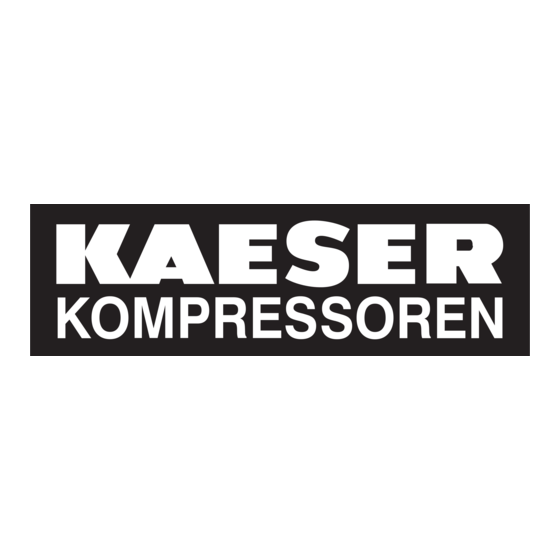
Summarization of Contents
1 Regarding this Document
1.1 Using this document
Instructions for proper use and storage of the operator manual.
1.2 Further documents
Lists additional documents included with the operator manual.
1.3 Copyright
Information about the copyright protection of the operator manual.
1.4 Symbols and labels
Explains symbols and labels used within the document for clarity.
2 Technical Data
2.1 Nameplate
Explains the machine's nameplate and lists key technical information.
2.2 Options
Lists available machine options and their corresponding codes.
2.3 Weight
Provides information on machine weight, noting it depends on fitted equipment.
2.4 Ambient conditions
Specifies permissible ambient temperatures and altitude limits for operation.
3 Safety and Responsibility
3.1 Basic instructions
General safety instructions and warnings for operating the machine.
3.2 Specified use
Defines the intended industrial use and risks of incorrect application.
3.3 Improper use
Outlines consequences of misuse, including damage and injuries.
3.4 User's responsibilities
Details user obligations regarding regulations and personnel.
4 Design and Function
4.1 Enclosure
Describes the machine enclosure, its functions, and limitations.
4.2 Machine function
Explains the basic operational principle of the air-cooled refrigerated dryer.
4.3 Operating points and control modes
Defines machine operating modes (STOP, READY, LOAD).
4.4 SECOTEC CONTROL
Explains the SECOTEC control system and its advantages.
5 Installation and Operating Conditions
5.1 Ensuring safety
Safety warnings and required ambient conditions for installation and operation.
5.2 Installation conditions
Information on determining location, clearances, and floor requirements.
5.2.1 Determining location and clearances
Guidance on selecting an installation location and necessary clearances.
5.2.2 Ensuring the machine room ventilation
Explains the importance and requirements for adequate machine room ventilation.
6 Installation
6.1 Ensuring safety
Safety instructions for installation, including working on live components and air networks.
6.2 Reporting Transport Damage
Procedures for checking and reporting transport damage.
6.3 Creating the air connection
Instructions for making the compressed air connections, including safety warnings.
6.4 Connecting the condensate drain
Instructions for connecting the condensate drain hose and collecting line.
7 Initial Start-up
7.1 Ensuring safety
Safety instructions for commissioning the machine.
7.2 Instructions to be observed before commissioning or re-commissioning
Checklist and special measures for re-commissioning after storage.
7.3 Checking installation and operating conditions
Checklist for verifying installation and operating conditions before commissioning.
7.4 Starting the machine for the first time
Steps for the initial start-up of the machine.
8 Operation
8.1 Switching the machine on and off
Procedures for safely switching the machine on and off using keys and disconnect device.
8.2 Using the remote control
Explains how to control the machine remotely via digital input or MODBUS TCP.
8.3 Acknowledging and Resetting Warning and Alarm Messages
How to acknowledge and reset warning and alarm messages on the display.
9 Fault Recognition and Rectification
9.1 Basic instructions
General advice on fault rectification and when to contact service.
9.2 Messages at the controller
Categorizes messages (alarms, warnings, maintenance) and lists alarm codes.
9.3 Communications module – Troubleshooting
Troubleshooting guide for communication module errors indicated by LEDs.
9.4 Faults
Lists common faults, possible causes, and recommended actions.
10 Maintenance
10.1 Ensuring safety
Safety instructions for performing maintenance tasks safely.
10.2 Regular maintenance tasks
Lists required maintenance tasks with intervals and chapter references.
10.3 Regular maintenance tasks
Lists necessary maintenance tasks, emphasizing authorized personnel.
10.4 Cleaning the refrigerant condenser
Instructions for cleaning the refrigerant condenser for optimal cooling.
11 Spares, Operating Materials, Service
11.1 Note the nameplate
Importance of the nameplate for ordering spares and service.
11.2 Consumable Parts and Operating Materials
Lists consumable parts and warns against using non-genuine items.
11.3 KAESER AIR SERVICE
Describes the benefits of the KAESER AIR SERVICE maintenance agreement.
11.4 Replacement parts for service and repair
Guidance on using parts lists for material requirements.
12 Decommissioning, Storage and Transport
12.1 Decommissioning
Procedures for temporary and permanent decommissioning of the machine.
12.2 Storage
Guidelines for storing the machine to prevent corrosion and damage.
12.3 Transport
Safety measures for transporting the machine, including forklift and crane use.
12.4 Disposal
Instructions for decommissioning and disposing of the machine responsibly.
13 Annex
13.1 Dimensional drawing
Refers to dimensional drawings for machine specifications.
13.2 Pipeline and instrument flow diagram (P+I diagram)
Refers to the P+I diagram section.
13.3 Electrical Diagram
Refers to the electrical diagram section.





Need help?
Do you have a question about the TG 780 and is the answer not in the manual?
Questions and answers